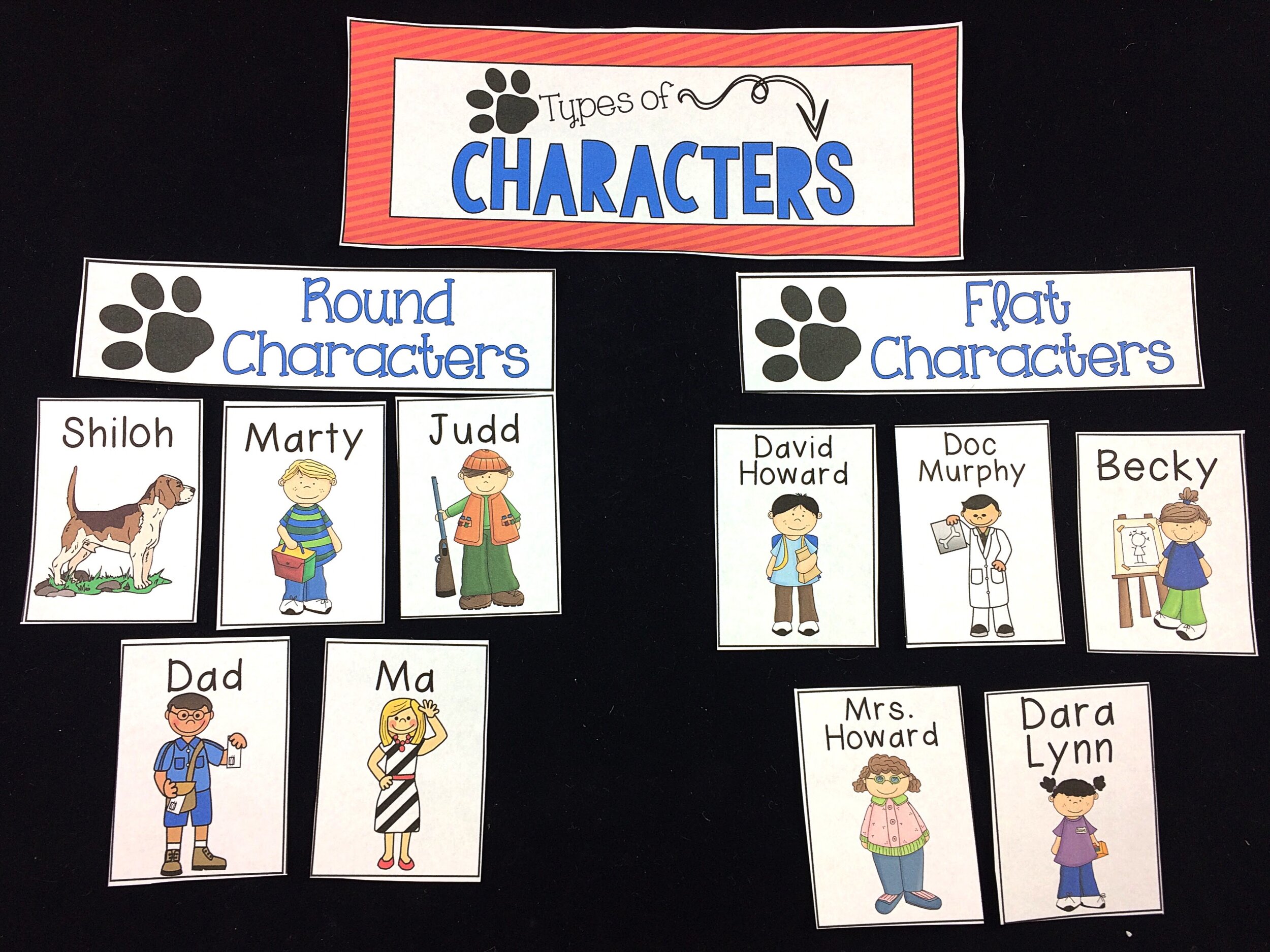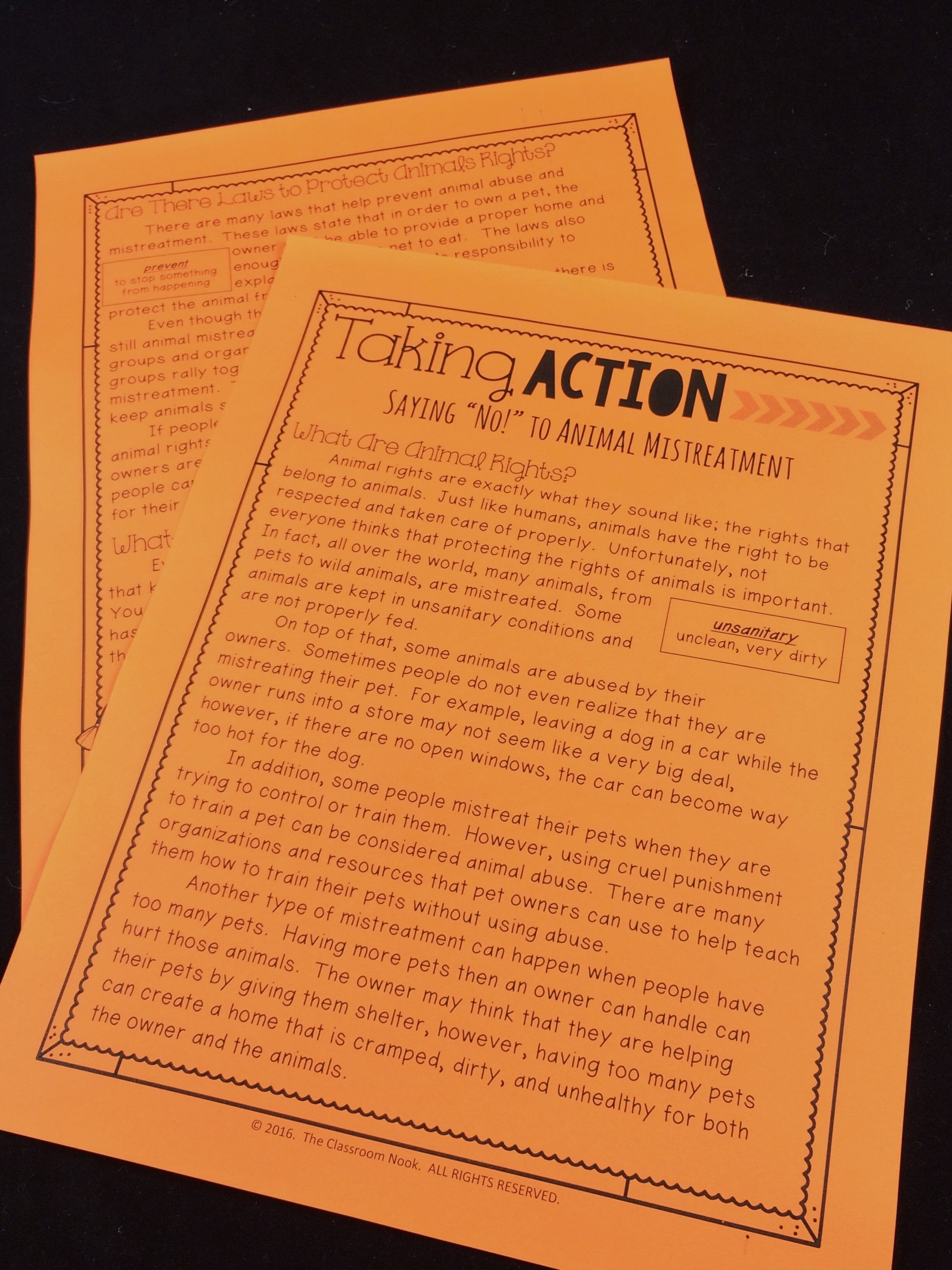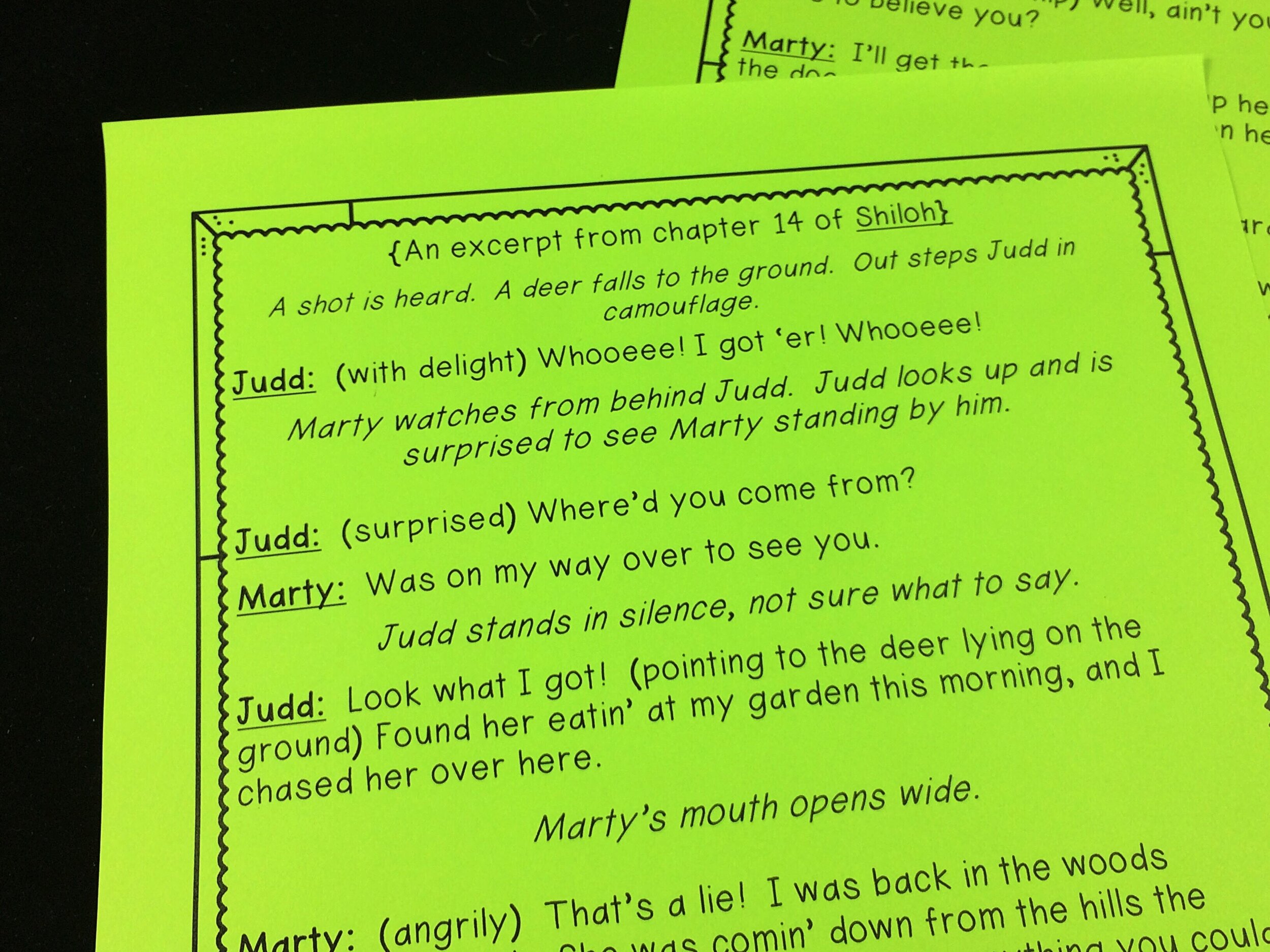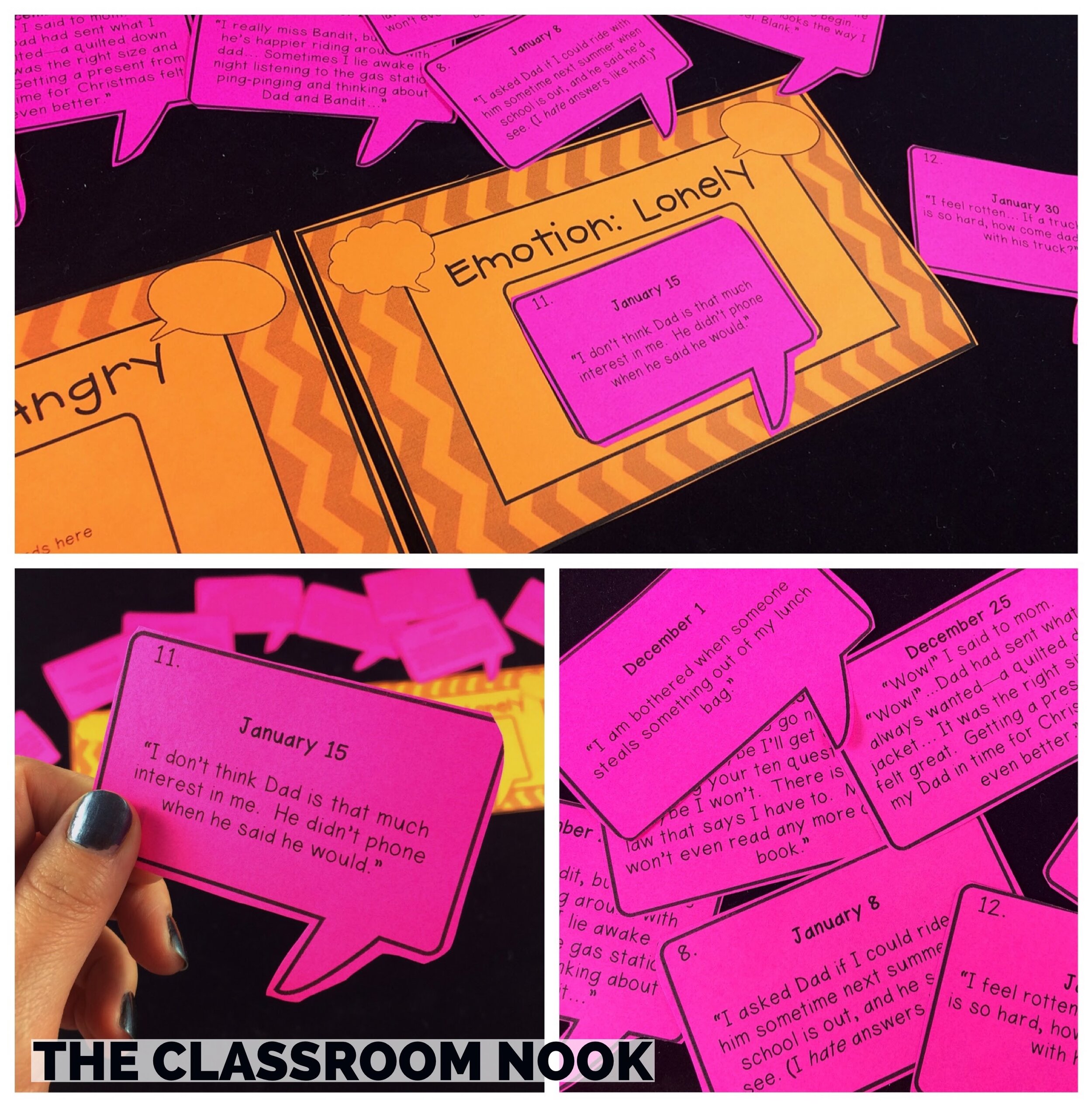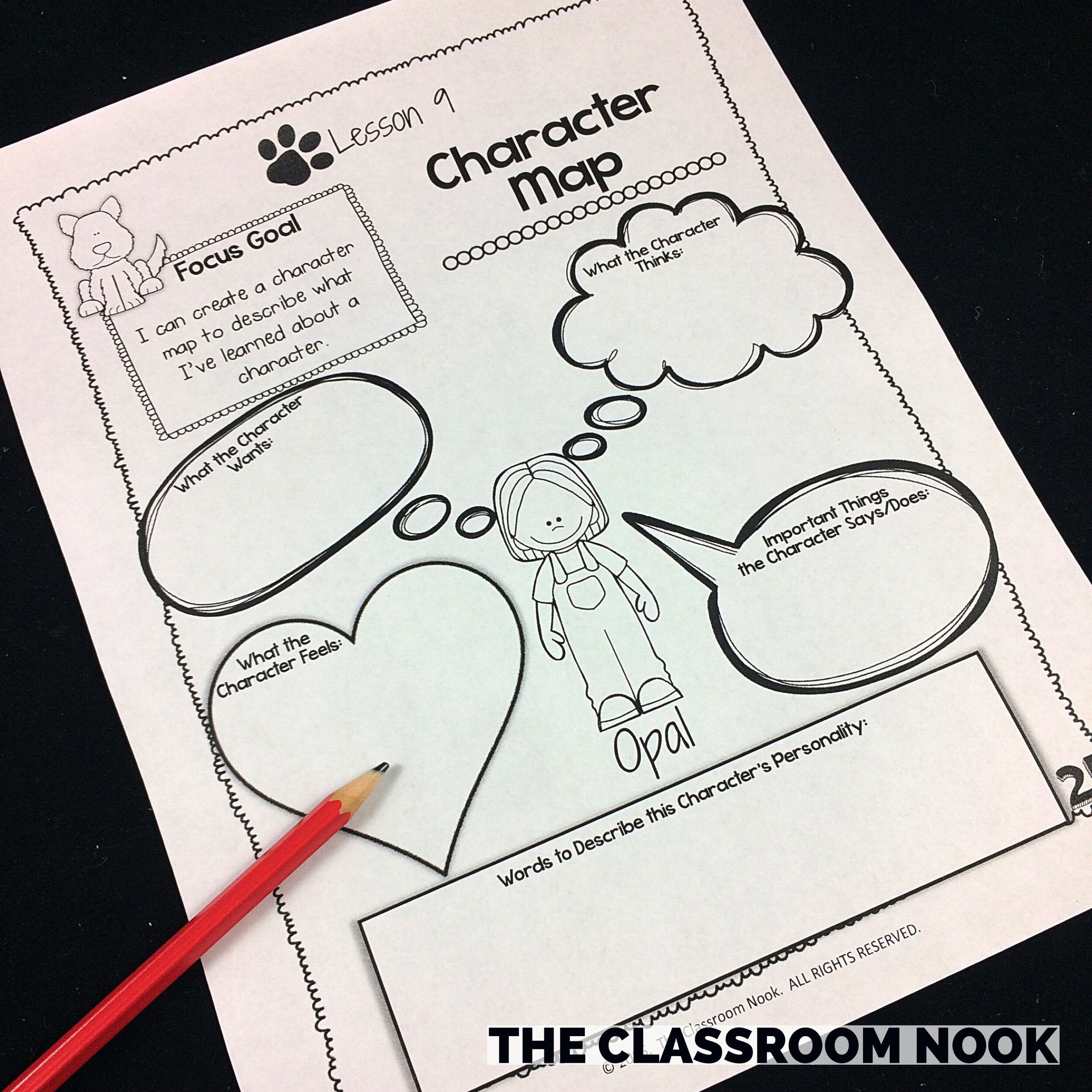CCP: Episode 54 // 6 GREAT Reading Activities to Use With Nearly ANY Novel!
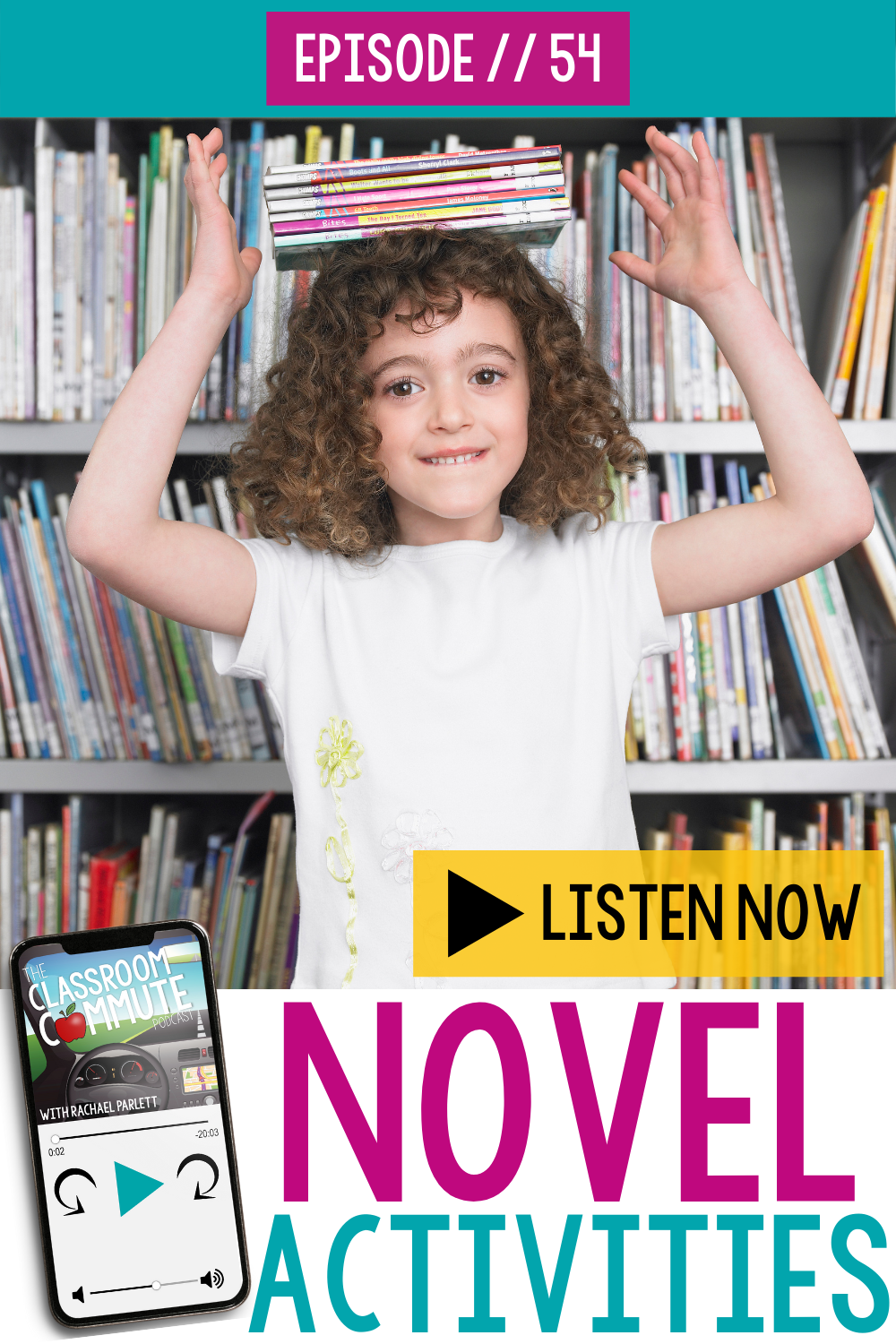
Are you always on the hunt for a great Reading Response Activity?
As an upper elementary teacher, you probably spend a good chunk of your time reading novels with your students. Am I right?
Well, I’m here to give you some activities to use with your students during your next novel unit. Whether your students are reading the novel as a whole-class, in guided reading groups, in literature circles, or even as individuals, there are some activities that work great with almost any novel.
Tune in to this episode as I'm going to share 6 great activities that I have used over and over in the different novels that I have read with my own students. You’ll love the wide-range of reading activities that will tap in to a variety of reading skills and strategies!
You’ll Learn
(Timestamps Shown)
A great activity to help students classify book characters (1:40)
What I use to have students keep track of the characters throughout the novel (4:19)
How to easily turn an excerpt from the novel into a reader’s theater script for a great fluency practice activity (6:42)
How to use nonfiction texts to compliment your fiction novels (8:15)
A great end-of-unit novel activity that uses book quotes in a small-group reading center (9:28)
An activity that supports students in showing how their thinking changes throughout a story (11:15)
LINKS & RESOURCES MENTIONED IN THE EPISODE
Novel Unit Activities (click on each image to check out the novel unit the activity is from):
REVIEW & SUBSCRIBE TO THE CLASSROOM COMMUTE PODCAST
Don’t miss a single episode. Subscribe to the podcast and you’ll get notified each week when a new episode gets dropped! And - if you love what you hear, I’d be so honored if you took a quick moment to rate and review the podcast so that other awesome teachers can find the podcast!
TRANSCRIPT
Ep 54 Novel Activities.mp3 transcript powered by Sonix—easily convert your audio to text with Sonix.
Ep 54 Novel Activities.mp3 was automatically transcribed by Sonix with the latest audio-to-text algorithms. This transcript may contain errors. Sonix is the best audio automated transcription service in 2021. Our automated transcription algorithms works with many of the popular audio file formats.
Hey, teachers, if you have a classroom and a commute, you're in the right place. I'm your host, Rachael, and I want to ride along with you each week on your ride into school. This podcast is the place for busy teachers who want actionable tips, simple strategies, and just want to enjoy their job more. Let's go. Hey there.
Welcome back to another episode of The Classroom Commute Podcast! I am Rachael your host, in this episode we're going to talk about six activities that you can include in your next novel unit. Now, these can be activities that work for essentially any novel. Anything that I'm sharing today, you can plug right into the current books that you're planning on reading with your students. I want to waste no time getting into today's episode because I know your time is valuable and limited so I want to get right to the good stuff. If you teach in upper elementary grades, which chances are you do if you're listening to this podcast, you likely spend a good chunk of your time during your literacy block reading novels with your students. That could be novels you read as a whole class in guided reading, literature circles, or even books that your students are reading individually. There are some activities that work great with almost any novel. I'm going to share with you, like I mentioned, six of them that you can use over and over in essentially any novel. Now, I'm speaking specifically to fictional stories today so all the activities that I'm going to share with you work with fiction stories.
One of the first things that I often do with my students, almost right from the beginning of the novel, is to begin identifying round and flat characters. If you're unfamiliar with these terms, let me clarify for a moment. Flat characters are those characters that only appear once or twice in the story. They don't really impact the story's outcome and the reader doesn't get to learn a lot about the character. They may know a few traits here and there, but they don't know that character inside and out. Round characters, on the other hand, are the lead characters of the story. Their words and actions greatly impact the events and outcomes of the story. The reader does get to know these characters in great detail through their words, thoughts and actions. I use these terms with my students 'flat' and 'round'. They are easy terms for students to visualize and understand. I use these right out of the gate when we're talking about characters in any novel. Once we identify what a round character and a flat character is, we start looking for them and identifying the actual characters in the book and giving them either a 'round' or 'flat' label. I typically would create a bulletin board for each novel, a section of that bulletin board was for keeping track of round or flat characters. I would simply write each character's name, maybe include a clip art or illustration of that character on a card. I would cut those cards out and on my bulletin board I would have two subheadings: Round Characters and Flat Characters. I would put that card with the character's name and picture under the correct heading. Now, it's important to point out here that sometimes when you begin reading a story, you don't always know which characters are going to be important and which ones are going to fade into the background. As you're reading, it's okay if you're taking one characters card out of a subcategory and moving it over to another. For example, when you first start reading a book, you deem a character to be a flat character for the first couple of chapters, but then you find out later on that they actually do play an important role in the story. You can instruct your students that it's okay to move that character's card over to the round character should something in the story change. This will, of course, lead to some great discussions around round and flat characters that will be ongoing throughout your novel. Identifying round and flat characters is something that I always like to do in the story. It creates great discussion and it's just a great way to keep track of the characters.
Now, once we know which characters are round, we can really focus in on those characters and dive deep into getting to know them. We can teach our students that getting to know a character really means that we can describe the things that the character wants, thinks, feels, does, and says. As we got to know specific round characters, I would have my students do a character map. They would record things that they know that the character wants, thinks, feels, does, and says on this map. Then the character map sets the foundation for being able to analyze that character and really dive deep into discussing how the character develops and changes over the course of the novel. Sometimes I would even have my students complete a character map of the same character several times to show how they've changed throughout the novel. I'll put a picture of the character map that I used with my students for one of the novels that we did over in the show notes so you can get an idea of what this character map looks like. You can get to that by going to classroomnook.com/podcast/54. You'll see an image there of the character map that I would use once students have created a character map for a particular character. They create multiple character maps or add to their character map as the story goes on, it's easier for them to see how the character changes over time. I always teach students that characters can change in four different ways. They can change their physical appearance. They can change their intelligence if they learn something new. They can change their social abilities. And they can change their feelings related to another character or an event in the story. I have my students refer to their character maps and compare what the character said early on in the story to what they're saying now or compare what they wanted to what they want now or how they felt and how they're feeling now. They can analyze the information on their character map to show how they've developed and changed over time. So, the second activity that I have my students do is to create a character map, add to that map, or create multiple maps of the same character throughout the story so that they can use the information on their map about how a character feels, thinks, says, does, and so on. Again, I'll go ahead and put a picture of my character map in the show notes so that you can see what it looks like and give you a better idea of what it might look like in your classroom.
The third activity that I love to do with a fiction novel is to turn an excerpt from the story into a reader's theater script. Now, this is not the first time that I have mentioned readers theater on this podcast. I love readers theater because of all the things that allows your students to practice like fluency and expression. It presents information in a little bit more of an engaging way. I especially love it for a novel unit because a lot of the work is already done for you. You simply just take the dialogue or narration from the story and retype it into a script format. You can take the dialogue that the characters say and turn that into dialogue for your readers theater script. You can take the narration of the story and create a narrator part for your readers theater script to read that part. You really don't have to come up with anything new. You are just putting it in script format. Now I especially love to do a reader theater when we get to the critical event of the story or the climax because it's fun for students to act it out in small groups and it's a great way to highlight the critical event of the story. You can use this activity to provide meaningful fluency practice. It can spark some great discussion around the critical event. You can also teach students to use appropriate tone of voice and mood to convey the feelings behind the characters and events in the particular section of the story that you've chosen for the readers theater script. So, my third activity for you is to turn an excerpt from the story, particularly the climax of the story into a reader's theater script.
The fourth activity that I love to do is pure fiction with non-fiction where possible. Finding a nonfiction text that pairs well with your novel works especially well with realistic and historical fiction novels. Let me give you an example. One of the books that I always read with my students was Shiloh. If you're unfamiliar with the story, it's about a boy named Marty who comes across this dog, who he names Shiloh. He comes to find out that this dog, Shiloh, is owned by a character named Judd who mistreats Shiloh. He doesn't feed him. He's mean to him. Marty tries everything in his power to find a way to make Shiloh his own dog because he knows he would treat him much better. When we were reading this novel Shiloh, we would often have a discussion around animal rights and treating animals properly. I provided my students with a nonfiction article about animals rights. The connection was perfect because students read factual information about taking action against animal mistreatment and they could apply that information to the fiction text of Shiloh as they were reading it. Think about places, in the novels that you are reading, where you can pair a nonfiction text with the fictional novel that you're reading.
All right, let's keep going. The fifth activity that I love to use in a novel unit is having students categorize book quotes. Now, I often do this activity as an ending activity when we have finished the novel. Now, inferring is an important skill that we need to teach our students. One authentic way to do this is to have students infer the feelings represented in different quotes by the characters in the novel. Let me show you what I mean. I loved doing this activity with Dear Mr. Henshaw by Beverly Cleary. Now, in this book, Leigh Bott's, the main character, experiences all the ups and downs of boyhood in middle school life. When we got to the end of the book, I picked out certain quotes that I thought represented different emotions behind that quote. Some of these emotions were lonely, angry, excited. What I would do is at a center activity, I had several quote cards that students would read together in a small group and they would infer which emotion they thought that quote represented. Then they would categorize those quotes into those different categories. For example, one of the quotes that Leigh Bott's, the main character, said was, "I don't think Dad is much interested in me. He didn't phone when he said he would." Students could read this quote and they could infer that Leigh Bott's had the feeling of 'lonely' behind this quote when he said it so they would categorize that into the lonely emotions category. Now, I chose to have students categorize the quotes based on different emotions that they inferred but you could choose categories for anything that you think your quotes would best fit in. I just like the idea of having students read a quote and then infer something about that quote and put them into categories. Think about ways that that would work in the novels that you're reading.
All right. One last idea for an activity to use in any novel unit is to have students show how their thinking changes. We often teach our students how characters can develop and change over the course of the novel but we also need to teach how the readers thoughts, feelings, and opinions change as well. This is that synthesizing strategy that we teach our students, but it's really difficult for our students to grasp. I use a really simple graphic organizer where students can record their thinking based on previous events before reading, during reading, as the events are happening, and then finally after they are done reading. I prompt students to pause their reading periodically to write their thoughts down about the events as they happen. I'll use prompts like 'at first I was thinking', 'now I'm thinking', after blank happened it made me think blank' and so on. Students can then show how their thinking changed over time based on what was happening in the story. Since all readers think a little differently, these graphic organizers would be a great springboard for a deeper discussion about what's going on because everybody's going to have different thoughts about what's going on. This activity is a great introduction into the synthesizing reading strategy without having to get too technical about synthesizing just yet.
All right, let's wrap this up. I gave you six activities that you could include in your next novel unit that work with essentially any novel as long as it's fiction. The first activity was to identify flat and round characters. The second activity was to make a character map and then to use that character map to complete a character analysis. The third activity was to turn an excerpt from the story, particularly the climax of the story into a reader's theater script. The fourth activity is to pair a nonfiction text with your fictional novel unit that will support the topics that are being discussed in your novel. The fifth activity is to choose several book quotes from the story and have students categorize those book quotes into groups that make sense. And then the final activity is to have students show how their thinking changes as they read the story. All of these activities help students to think critically and deeply about the characters and events of a novel. I really like how these activities are general enough that you can repeat them in multiple novels throughout the year so that students really get good at the skill that the activity is supporting. They really get good at analyzing book quotes and they really get good at showing how their thinking changes and so on. Make it a habit to repeat these same activities in multiple novels. As you do so, the conversations that you have with your students will become richer and richer.
All right, that is all I have for you today. If you want to see some novel units already done for you with a lot of these activities that I discussed, I will link to my collection of novel units over in the show notes over at classroomnook.com/podcast/54. Along with that, I will put some pictures and images of some of the activities that we talked about today in this episode so that you get a little bit of a visual representation of the strategies and activities that I have been mentioning. I hope you have a great rest of your day and a good start to your week. I will see you again next week. Bye for now.
Automatically convert your audio files to text with Sonix. Sonix is the best online, automated transcription service.
Sonix uses cutting-edge artificial intelligence to convert your mp3 files to text.
Get the most out of your audio content with Sonix. Automated transcription with the best customer support team to help you at every step of the way. Use Sonix to simplify your audio workflow. Researchers better analyze their interviews by transcribing their video and audio recordings with Sonix. Create better transcripts with online automated transcription. Sonix's automated transcription is fast, easy, and accurate.
Manual audio transcription is tedious and expensive. Transcription agencies are able to better serve their customers by using Sonix's automated transcription in the back office. Sonix can make your life a whole lot easier. Automated transcription is much more accurate if you upload high quality audio. Here's how to capture high quality audio.
Sonix uses cutting-edge artificial intelligence to convert your mp3 files to text.
Sonix is the best online audio transcription software in 2021—it's fast, easy, and affordable.
If you are looking for a great way to convert your audio to text, try Sonix today.

